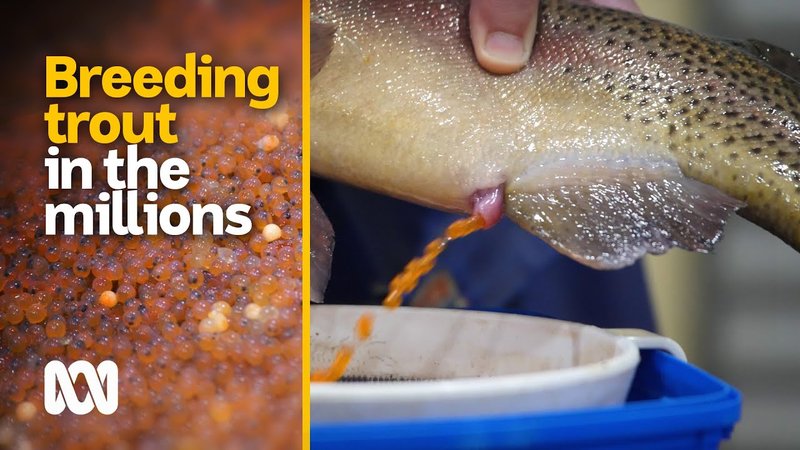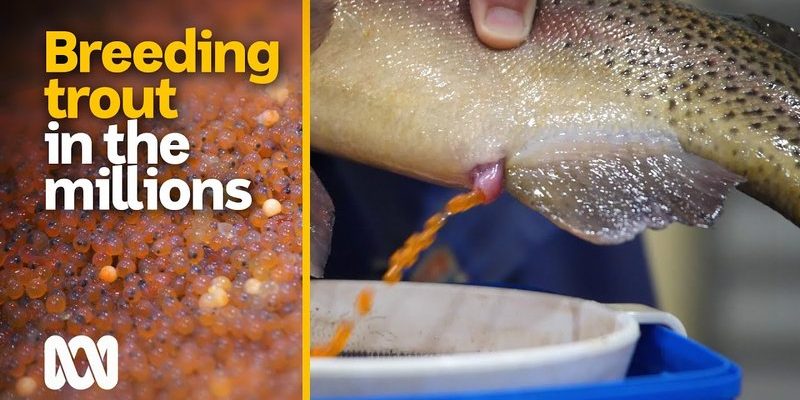
Now, breeding trout isn’t just about tossing a couple of fish into a tank and hoping for the best. It involves understanding the different species, their breeding cycles, and even the water conditions they thrive in. We’re diving into everything you need to know about breeding trout, focusing on key techniques and tips that will help you along the way.
Choosing the Right Trout Species
Before you even think about breeding trout, you need to choose the best species for your setup. Different species have unique requirements and characteristics. For instance, Rainbow Trout are quite popular due to their adaptability and vibrant colors. On the other hand, Brown Trout are known for their hardiness and can thrive in a broader range of environmental conditions.
You might also consider Brook Trout, which are smaller and tend to prefer cooler waters. Each species has its own quirks, so doing a little homework can save you a lot of headaches later. Think about what fits your local environment, as well as what you’re ready to manage.
Setting Up a Suitable Breeding Environment
Creating the right environment is crucial for successful trout breeding. Just like humans need cozy homes, trout need specific conditions to thrive. Start with a tank or pond that has clean, flowing water. Trout love cold, oxygen-rich water, so a good filtration system is key.
Make sure to maintain a temperature between 50°F and 60°F. You can achieve this by using chillers or simply ensuring your pond is shaded during the hottest parts of the day. Adding aeration stones can also help keep the water well-oxygenated, making it a happy home for your fish.
Don’t forget about space! Trout can get territorial, especially during breeding. Provide plenty of hiding spots like rocks and plants to keep them comfortable and reduce stress. Here’s the thing: a well-maintained environment makes all the difference.
Understanding the Breeding Cycle
Trout have a specific breeding cycle that you’ll need to understand if you want to succeed. Typically, breeding occurs in the fall for most species. This period, known as spawning, is vital for their reproduction. Adult trout become more colorful and aggressive as they prepare to mate.
Female trout lay eggs in gravel nests called redds. These nests are created by the female using her tail to clear debris from the riverbed. After she lays her eggs, the male fertilizes them. It’s a beautiful yet delicate process.
You might be wondering how to recognize when your trout are ready to spawn. Look for signs of increased activity, particularly among the males who become very noticeable during this time, flaunting their colors and displaying dominance.
Feeding Your Breeding Trout
Nutrition plays a huge role in the health and success of breeding trout. It’s like giving them the best fuel to thrive. During breeding season, you should provide a high-protein diet to encourage healthy eggs and robust fry.
Fish flakes and pellets specifically designed for trout are a great choice. You can also supplement their diet with live foods like worms or small insects. This not only provides nutrition but also mimics their natural foraging behavior, making them happier and more active.
Here’s a pro tip: avoid overfeeding. Trout are prone to health issues if they eat too much. Instead, focus on giving them smaller amounts several times a day. This keeps their environment cleaner and promotes healthy growth.
Incubating Trout Eggs
Once your trout have successfully spawned, it’s time to think about the eggs. Trout eggs require careful handling and specific conditions. Ideally, you’ll need to transfer the eggs to a separate incubator or a well-maintained tank.
Keep the water temperature around 50°F and ensure good water flow over the eggs to provide oxygen. It’s equally important to remove any dead eggs promptly, as they can contaminate the healthy ones. Incubation can typically take between 30 to 60 days depending on the species and water temperature.
Watching the eggs develop and hatch can be an exciting experience! Once the fry emerge, they’ll need even more specialized care as they transition into independent fish.
Caring for Trout Fry
After your trout fry hatch, the real fun begins! At this stage, the little fish need a safe and nurturing environment to grow. Start by feeding them specialized fry food that’s balanced in nutrients. It’s often finely crushed and made to cater to their tiny mouths.
You might want to create a separate tank for the fry since adult trout can be territorial and may eat them. Keep the water clean and oxygen-rich, as young fish are incredibly sensitive to water quality. It’s essential to monitor their health regularly, checking for any signs of disease or stress.
Watch them grow! This period can be both exhilarating and nerve-wracking as you nurture these tiny beings into healthy juveniles.
Common Challenges in Trout Breeding
Like any hobby, breeding trout comes with its share of challenges. Water quality is one of the biggest issues. You might run into problems with ammonia spikes or low oxygen levels, both of which can harm your fish. Regularly testing your water will help prevent these issues.
Another potential hurdle is recognizing and managing disease. Trout can experience various ailments such as fin rot or ich. Familiarize yourself with the signs and be proactive in treating any illnesses. Luckily, many diseases can be prevented with good water quality and proper nutrition.
Lastly, be prepared for potential overpopulation. If you’re successful at breeding, you may find yourself with more fry than you can handle. Have a plan for managing excess fish, whether that’s expanding your tank or finding responsible homes for them.
Wrapping Up Your Trout Breeding Journey
Breeding trout can be an incredibly fulfilling experience, filled with unique challenges and lots of joy. It’s a wonderful way to connect with nature and enjoy the wonders of aquatic life. With the right techniques and tips, you can create an engaging and productive breeding environment.
Remember, patience and attention to detail are key. Whether you’re aiming to enjoy a personal hobby or contribute to a local fishery, the journey is filled with learning and growth. Happy breeding, and may your tank be ever full!

